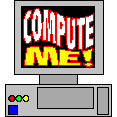

Use the Internet to your advantage by adding Web site links to your presentation to take your audience on a “live” demonstration.
You’re under enough pressure to put together a presentation you hope will keep your audience awake, but if you’re not a graphics wiz or are still tweaking your presentation, try something that’s easy to do and guaranteed to make your audience sit up and take notice: link to the Web.
Simple, yet effective, you can “take" your audience to a web site while talking about it, or end your presentation with a live demonstration of what can be done online with the information you just talked about. This not only makes your presentation more interesting, but lets your audience feel like they’re a part of it.
What’s most important is making sure the room you’re presenting in has either an ethernet connection or an outgoing line. This means your laptop should be as up-to-date as possible, with not only a dial-up modem (56k is preferable), but an ethernet card as well.
When talking to your host, mention that you like to access the Internet during your presentation and ask if Internet connectivity is available; if so, what kind? Some companies prefer that only employees use their network, so don’t be offended if they don’t give you permission. However, if you have your presentation on a CD, floppy or other media (which you should, as a backup), and your host has a company laptop available, they might let you do your presentation on their equipment. If the network is a no-go, then ask if there is an accessible outgoing line. A word of caution here: You will need an account with an ISP you can dial into and you should bring your own telephone cord as a courtesy (25 feet costs less than $5.00 at most retail stores).
Where to add Web site links in your presentation?
Go through your presentation, slide by slide. Is there something you’ll be talking about that you think the audience will find particularly useful? If so, go online and see if there is a corresponding Web site. Explore the Web site to make sure it fits with your presentation. If it does, add the site, then run through your presentation to see how everything flows -– this is when you can determine whether to save all your Web “surfing” until the end of the presentation or not.
Either way, to add a Web site URL in Microsoft PowerPoint (2002 v.10.3):
1. For a text link, highlight the text, then click on Ctrl-K or Insert in the main menu, then Hyperlink (for a graphic link, click on the graphic first)
2. Under Link To, make sure Existing File or Web Page is selected
3. In Address, type in the URL of the Web site, then click on OK
4. To view the link, save the file, then hit F5 to view the slide show, or click on Slide Show, View Show
5. Test the link to make sure it works properly
Once your presentation is ready, your laptop is next. Do you have an ethernet card? If not, buy one (you can get one for under $40). Does your laptop have the current hardware drivers? If you’re not sure, visit the laptop maker’s web site, then click on Support or do a search on the site for the latest drivers; also make sure your software is up-to-date, especially your antivirus and firewall programs. You don’t have these? If you plan on using the Internet in your presentation, it is a MUST to have both antivirus and firewall software on your laptop or it will be vulnerable to viruses, trojans, hackers and the like. You don’t want any nasty surprises in the middle of your presentation!
If your host does allow you to use their network, go to the Properties for your network card. Click on TCP/IP Properties, then Use the following IP address and Use the following DNS server addresses (you’ll get these from your host). You should now be connected to the Internet. It’s a good idea to set up a half hour ahead of time (if not earlier), go through your presentation and click on the URLs. You don’t want to find out during your presentation that one of the URLs is now a porn site.
During the presentation, get your audience involved.
When you visit a Web site, make your point, then ask them if there is somewhere on that site they’d like to go; encourage them to ask questions while you’re online; sometimes an audience member will recommend a Web site -– go to it; ask them for their comments; get a discussion going! All of this gives them an incentive to explore online when they go back to their offices.
Finally, make sure you know the Web sites you go to –- do your homework before your “live” presentation and you’ll leave your audience asking for more.
J.A. Hitchcock is a regular contributor to Compute Me. Visit her web site at jahitchcock.com.